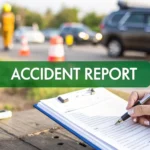Car Accident Settlement Timeline, one of the most pressing question after a car accident is “How long will this take?” While a simple property damage claim might resolve in a few weeks, a car accident settlement timeline involving injuries or vehicle value disputes can often stretch for several months to over a year. Understanding the stages of this process is the first step toward managing your claim effectively and securing a fair outcome.
Unpacking the Car Accident Settlement Timeline
The journey to receiving fair compensation after a car accident is a marathon, not a sprint. The entire process unfolds in distinct stages, and the unique details of your case—such as the severity of injuries or clarity of fault—will either accelerate or slow down the timeline.
Think of the process in three main phases: the initial investigation, the negotiation with the insurance company, and the final payment. Knowing what to expect at each step helps you remain patient and proactive, so you aren’t pressured into accepting a lowball offer just to resolve the matter quickly.
This visual provides a general overview of a typical settlement timeline, from the day of the crash to the final payment.
As you can see, the initial steps often move quickly. The negotiation phase is where the car accident settlement timeline frequently slows down, making a well-supported claim essential.
Typical Phases of a Car Accident Settlement timeline
To provide a clearer picture of the process, here is a breakdown of the main stages and their average timeframes. This table can help you set realistic expectations for your claim.
| Settlement Phase | Typical Timeframe | Key Activities |
|---|---|---|
| Investigation | 2-8 Weeks | Reporting the accident, gathering evidence (police reports, photos), and seeking initial medical treatment. The insurer assigns an adjuster and begins its review. |
| Treatment & Recovery | Weeks to Months | This is the period required for healing. You’ll reach Maximum Medical Improvement (MMI), the point at which your doctor determines your condition has stabilized. |
| Demand & Negotiation | 1-6+ Months | Once you reach MMI, a demand letter is sent to the insurer. This begins negotiations, which can involve several offers and counteroffers. |
| Settlement & Payment | 2-6 Weeks | After an amount is agreed upon, you will sign a release form. The insurance company then processes the payment and issues the check. |
Keep in mind that these are estimates. A straightforward claim may proceed faster, while a complex case with serious injuries or liability disputes could take significantly longer.
Why Does It Take So Long?
Impatience is natural, but rushing the process can be costly. The settlement timeline often depends on factors outside of your direct control.
For example, most personal injury claims do not enter serious negotiations until medical treatment is complete. Until your doctors understand the full extent of your injuries and future care needs, it is impossible to calculate your total damages accurately. Settling too early could mean accepting less than you need for future medical expenses.
Industry data shows that the average car accident settlement timelines takes six months to over a year to fully resolve. Simple claims often conclude within six to nine months after medical care is finished, but more complex situations frequently extend the timeline beyond the one-year mark. To learn more about factors that affect your final payout, see our guide on how to maximize your personal injury case settlements.
The Critical First Steps After an Accident

The actions you take in the minutes and hours following a collision significantly impact your car accident settlement timeline. Following these initial steps correctly builds a strong foundation for your claim and helps avoid common delays and disputes later.
Your first priority is always safety. Once you confirm everyone is safe and have called for emergency services if needed, your role shifts to documenting the scene. This is your best opportunity to capture evidence of what happened.
Protecting Your Claim From Day One
Act as a fact-gatherer. The more clear and unbiased information you collect immediately, the smoother the insurance investigation will be. Here is a checklist of what to do at the scene:
- File a Police Report: Always contact the police, even for a minor accident. An official police report provides an impartial record of the incident, a document insurance companies rely on heavily.
- Take Detailed Photos: Use your phone to document everything. Capture wide shots of the intersection or road, then take close-ups of the damage to all vehicles involved. Photograph skid marks, road debris, and any relevant traffic signals or signs.
- Exchange Information: Get the other driver’s name, contact information, driver’s license number, and insurance policy details. If there are witnesses, obtain their names and phone numbers as well.
A common mistake is to dismiss minor soreness. Seeking a medical evaluation right away creates a documented link between the accident and any injuries, which is critical for your claim.
Making the First Call to Your Insurer
After addressing the immediate situation, you must notify your insurance company. This initial call with an adjuster is more important than many people realize. Keep your statements brief, factual, and to the point.
Stick to what you know for certain. Do not speculate about who was at fault or admit any responsibility. Simply state where and when the accident occurred and who was involved.
It is also wise to understand how your vehicle’s damage will be evaluated. Learning about the professional car appraisal after an accident process will prepare you for conversations about repair costs, your car’s fair market value, and potential diminished value. Taking these proactive steps provides the clear, organized information needed to move your claim forward efficiently.
Navigating the Insurance Investigation Phase
Once your claim is filed, the insurance company begins its investigation. During this phase, which typically takes a few weeks to a couple of months, the insurer works to determine what happened, who was at fault, and the value of your claim.
An insurance adjuster will be assigned to your case to review the police report, contact witnesses, and inspect your vehicle’s damage. Insurers may use their own team or hire outside private insurance investigators to gather information. Their primary goal is to assess the accident from a perspective that protects their company’s financial interests.
The Friction Point: Calculating Your Car’s Value
Vehicle valuation is a major point of conflict and a common reason the settlement timeline gets extended.
Insurers often use standardized software that generates a value based on generic data. While efficient for them, these tools frequently overlook unique aspects of your vehicle, such as its excellent condition, recent upgrades, or local market demand. This often results in a lowball offer.
If their initial valuation is inaccurate, it can trigger a frustrating and lengthy negotiation process, adding weeks or even months to your claim. The insurer may be counting on you to accept a quick, low offer to avoid further hassle.
The insurance company’s valuation is designed to protect their bottom line, not yours. Their goal is to pay out as little as possible, which means their initial offer rarely reflects your vehicle’s true pre-accident fair market value.
This is also where insurers often overlook a significant part of your financial loss: diminished value. Even after flawless repairs, a car with an accident history is worth less. You are legally entitled to compensation for this loss. Learn more about how to file a successful diminished value claim.
Taking Control with Objective Proof
This is your opportunity to take control of the negotiation. Instead of simply accepting the insurer’s low valuation, you can present your own hard evidence.
An independent, certified appraisal from a service like SnapClaim provides unbiased, data-driven proof of your vehicle’s actual cash value before the accident. An independent appraisal analyzes all the specific details of your car, providing a comprehensive valuation that cookie-cutter software overlooks.
When you provide the insurer with a certified report, you are not just disagreeing with their offer; you are challenging it with credible, market-based facts they cannot easily dismiss. This single step can significantly reduce negotiation time by preventing disputes from the start. It arms you with the proof needed to support your claim and push for a faster, fairer settlement. Furthermore, SnapClaim’s money-back guarantee means there is no risk—if the insurance recovery from the claim is less than $1,000, the appraisal fee is fully refunded.
Mastering the Art of Insurance Negotiation
Once the insurance company completes its investigation, the negotiation phase of your car accident settlement begins. You will be communicating with an adjuster whose primary role is to protect the company’s profits by minimizing claim payouts.

This stage is often the longest and most challenging part of the process, but it is also where you can secure the compensation you deserve. Success depends on being prepared, confident, and equipped with undeniable proof of your losses.
Crafting Your Demand and Countering Low Offers
Your first official move is to send a formal demand letter that clearly outlines all your losses—from property damage and your vehicle’s diminished value to medical bills and lost wages. This letter establishes the foundation for the entire negotiation.
The insurance adjuster will almost certainly respond with a low initial offer. This is a standard tactic to see if you will accept a quick, low payout. Do not accept it. Instead, view their offer as the starting point for negotiation.
To effectively counter their offer, you need concrete evidence to justify your demand. This is where an independent appraisal becomes your most valuable tool.
An adjuster might claim their valuation is “final” or based on “industry standards.” Remember, their standards are designed to save their company money. A certified appraisal report from an unbiased third party is the only way to level the playing field.
A professional report gives you the evidence needed to dismantle their lowball offer. It provides a detailed, market-based analysis of your vehicle’s true pre-accident value and post-repair diminished value. Our guide on navigating the total loss appraisal process explains exactly how this evidence can be a game-changer.
Your Strongest Negotiation Tool
An independent appraisal does more than just challenge a low number; it transforms the negotiation dynamic. Instead of a subjective argument, you introduce objective, verifiable facts.
- It provides undeniable proof: The report documents your vehicle’s specific condition, features, and local market value, leaving little room for the adjuster to argue with generic data.
- It justifies your counteroffer: You can point directly to the appraisal to show why their offer is insufficient and why your demand is fair and accurate.
- It can shorten the timeline: When you present irrefutable evidence upfront, you can cut through the typical back-and-forth and push the insurer toward a reasonable settlement much faster.
This step is a risk-free way to strengthen your position. At SnapClaim, we stand by our reports with a money-back guarantee: if your insurance recovery from the claim is less than $1,000, your appraisal fee is fully refunded. This empowers you to negotiate with complete confidence.
Common Roadblocks That Delay Your Settlement
Even a seemingly straightforward claim can encounter obstacles that extend your car accident settlement timeline. Understanding these potential delays helps you remain proactive and maintain realistic expectations. While some delays are necessary, others may be strategic on the part of the insurer.
One of the most common hurdles is a dispute over liability. If it is not immediately clear who was at fault, the insurance companies will conduct a thorough investigation. This can involve reviewing the accident scene, interviewing witnesses, and sometimes hiring accident reconstruction experts, adding months to the process.
Complex Injuries and Valuation Disputes
Another major factor that can slow your settlement is the severity of your injuries. If you require long-term medical care, your claim cannot be accurately valued until you reach Maximum Medical Improvement (MMI). This is the point when your doctor confirms your condition has stabilized. Settling before you know your long-term prognosis is a significant risk, so this necessary waiting period naturally extends the timeline.
Similarly, disagreements over your vehicle’s value can bring progress to a halt. When an insurer’s offer for your total loss or diminished value is unreasonably low, it creates a serious conflict. A major roadblock occurs when the insurance company refuses to negotiate, making it crucial to be prepared by understanding why claims might be refused and what actions you can take.
Key Insight: Many delays are predictable. By anticipating a dispute over fault or your vehicle’s value, you can prepare your evidence in advance. This helps keep your claim moving forward and prevents unnecessary stalls.
An independent, certified appraisal report is your most powerful tool in these situations. It provides objective proof to challenge an insurer’s low valuation and can prevent your claim from getting stuck in a prolonged dispute. Our total loss dispute guide offers more strategies for handling this common roadblock.
Other Common Settlement Delays
A few other issues can complicate the settlement process:
- Multiple Parties Involved: Accidents with more than two vehicles create a complex web of claims that must be untangled before any payments are made.
- Unclear Policy Limits: If the at-fault driver’s insurance is insufficient to cover all damages, you may need to involve your own underinsured motorist coverage.
- Slow Insurer Response: Sometimes, delays are intentional. Insurers know that dragging out the process can create financial pressure, hoping you will accept a lower offer out of desperation.
Getting It All Wrapped Up: Finalizing Your Claim and Receiving Payment
Reaching a settlement agreement is a major milestone, but a few crucial steps remain in your car accident settlement timeline. This final phase involves paperwork and ensuring the funds are transferred correctly.
Once you and the adjuster have verbally agreed on a settlement amount, the insurance company will send you a settlement release form. This is a legally binding document that requires careful review before you sign.
Reviewing the Settlement Release Form
This document finalizes your claim. By signing it, you agree to release the insurance company and the at-fault driver from all future liability related to this specific accident.
This is a critical step. Once signed, you cannot seek additional compensation later, even if your injuries worsen or you discover further vehicle damage. The release form permanently closes the claim.
Review every detail carefully. Confirm that the settlement amount matches what was agreed upon. Crucially, ensure the form only releases claims related to this accident, not a general release that could affect unrelated future claims.
After you sign and return the release, the payment process begins. You can typically expect to receive your settlement check within two to six weeks. If 30 days pass without payment, a polite follow-up call to the adjuster is appropriate. For additional information about your rights as a consumer, the National Association of Insurance Commissioners (NAIC) is a valuable resource.
FAQ: Your Fair Market Value Questions Answered
How long is too long for a car accident settlement timeline?
While there is no single answer, a simple property damage claim should not take more than a few months. If your case involves injuries or liability disputes and has been stalled for over a year without a clear reason, it is time to press for an update. Delays for ongoing medical treatment or complex liability investigations are normal, but prolonged unresponsiveness from an insurer is a red flag.
Should I accept the first settlement offer?
It is almost always advisable not to accept the first offer. An insurer’s initial offer is typically a low starting point for negotiations. Adjusters often hope you will accept a quick payout to close the file. Instead, compare their offer to your documented losses, including repair estimates and a certified appraisal of your vehicle’s value, and respond with a counteroffer supported by your evidence.
Can I do anything to speed up my settlement?
Yes, being proactive can significantly influence how quickly your claim is resolved. You can help keep the process moving by:
Responding promptly to any requests for information from the insurer.
Keeping all your documents well-organized and easily accessible.
Providing all evidence of your damages at the beginning of the claim to avoid back-and-forth communication. Obtaining an independent vehicle appraisal early is one of the most effective actions you can take. It can prevent the lengthy disputes over your car’s value that cause major delays in the car accident settlement timeline.
What if the other driver’s insurance is not enough?
If the at-fault driver’s policy limits are insufficient to cover all of your damages, you have other options. The most common solution is to file a claim under your own policy if you carry underinsured motorist (UIM) coverage. This coverage is designed specifically to bridge the gap when the other driver’s insurance falls short. In some cases, a personal lawsuit against the at-fault driver may be necessary to recover the remaining damages, though this is a more complex and lengthy process.
Don’t let the insurance company have the final say on what your car is worth. SnapClaim delivers the certified, data-driven appraisal reports you need to anchor your negotiations and fight for the settlement you deserve. Get your free estimate today or order a report to put real power behind your claim.
About SnapClaim
SnapClaim is a premier provider of expert diminished value and total loss appraisals. Our mission is to equip vehicle owners with clear, data-driven evidence to recover the full financial loss after an accident. Using advanced market analysis and industry expertise, we deliver accurate, defensible reports that help you negotiate confidently with insurance companies.
With a strong commitment to transparency and customer success, SnapClaim streamlines the claim process so you receive the compensation you rightfully deserve. Thousands of reports have been delivered to vehicle owners and law firms nationwide, with an average of $6,000+ in additional recovery per claim.
Why Trust This Guide
This article was reviewed by SnapClaim’s team of certified auto appraisers and claim specialists with years of experience preparing court-ready reports for attorneys and accident victims. Our content is regularly updated to reflect the latest industry practices and insurer guidelines.
Get Started Today
Ready to prove your claim? Generate a free diminished value estimate in minutes and see how much you may be owed.
Get your free estimate today





